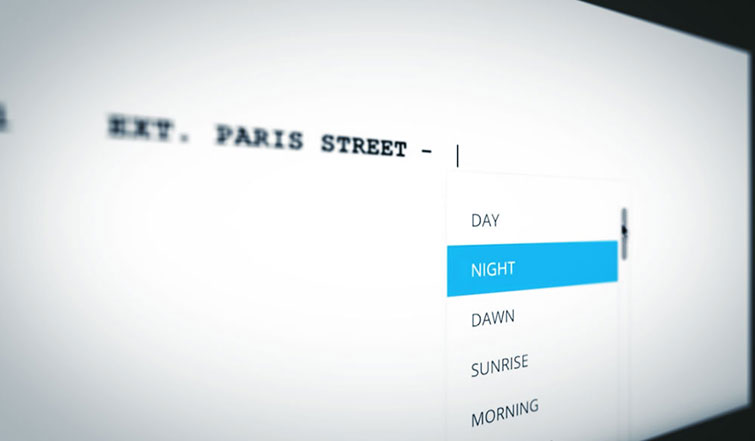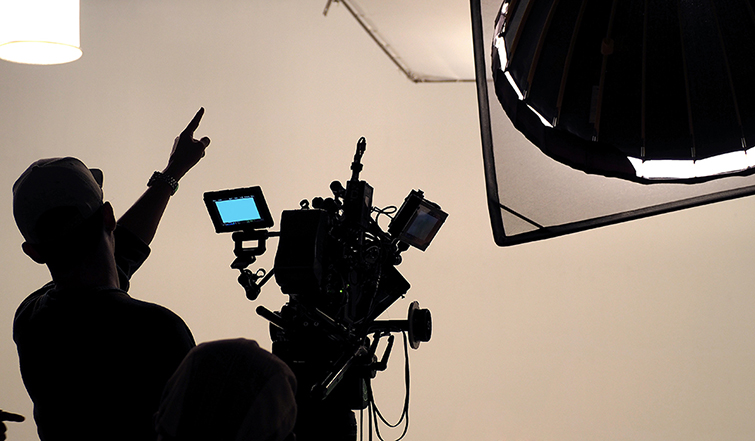
Essential Advice on Producing Your Own Short Film
The producer plays an important role in the filmmaking process. In this article, we’ll take a look at the benefits of a dedicated producer.
So, you want to make a short film! Well, someone has to produce it. It takes more than just a director, cinematographer, cast, and crew to pull off a film — whether it’s a short or a feature. Now, a director, or even one of the lead actors, can also produce the film, but as you’ll see, it’s best to have a dedicated producer. So, what exactly does a producer do?
A film producer is responsible for bringing together various filmmaking components. Those components include the initial story for the film and the cast and crew who will actually make it.

Image via “The Unifying Power of Storyboards.”
On a feature film, there are several kinds of producers. There’s the producer who has (or acquires) either a story they want to make or a script they’ve purchased; this producer then hires the crew to make it happen. There’s the executive producer, who either funds the film or helps secure funding for the film (the ones who actually write the checks are typically given a co-producer credit). And there’s the line producer, who makes the final budget, oversees the schedule, and helps make sure the overall production stays on track and doesn’t go over budget. (Associate producer seems to be a throwaway credit given to people who may have helped make connections or otherwise furthered the production).
On a low-budget short film, most crew members wear multiple hats, so the producer is likely to be a mix of producer, line producer, and executive producer.
The Story
So, you’ve got an amazing idea for a short film. If you happen to be a writer, great! If not, you’ll need to at least write well enough to give the screenwriter a solid vision so they can craft a script. Who are the characters? What’s the plot? Are there any big moments or set pieces you really want to see happen? You’ll work with the writer, giving feedback and reviewing revisions until you have the script refined and ready to produce.
Key Crew
Now that you have a script, you’ll need to assemble your key crew. First, who’s going to direct the movie? It’s not wise to just pick any director. Remember, this is your story and your characters! You want a director who will do it justice. George Lucas didn’t just hand off Indiana Jones to any director! He knew Steven Spielberg had the right eye and creative genius to really bring Dr. Jones to life!
Getting your director is the first big step. Often, directors will have certain cinematographers and gaffers they prefer to work with. Work with them to secure those people. You want to empower your director as much as you can so they bring this story to life.
You don’t need every single crew position filled right now! But, it’d be beneficial to have at least your director and cinematographer locked down. Once you go into pre-production, you can work with them to start filling in the rest of the crew.
Lead Actors
The director realizes the story, but the lead actors bring the characters to life. Who will portray the heroes and villains of your movie? For a short film, you’re not likely to get an A-lister to play your hero, but you still need a good actor. Whether it’s your friend or some local talent, find the best person to fill the role.
Money, Money, Money!
What’s a realistic budget for this film? It’s good to know both the bare minimum it will take to pull it off and the maximum you need to be truly faithful to the script. Remember, a maximum budget is not “all the money in the world.” It’s merely the full amount it’d take to produce the project.
Think of a car dealership. The dealer wants to sell you a car for $30K, to cover the cost of the car and to make a fair profit. But, since he still wants to sell the car, he knows he could sell it for $24K. The lower price wouldn’t really give him much profit; instead, it would merely cover the cost of the car. The $30K price point allows him to sell the car and pay his employees.
The same goes for a film. What’s the maximum budget you need to pay your cast and crew? And, even if you can get your cast and crew to work for free, you still need to pay for food and the props and equipment rentals necessary for the production.
Where is the money coming from? In the feature film world, you would write up a business plan; attach your script, budget, letters of interest from key crew and lead actors; and go to studios, wealthy individuals, and so on to raise the money for the film. In the short film world, especially super low-budget short films, you’ll either have to pay it all yourself or crowdfund the money from friends and family.
For my short film “The Accomplice,” I saved up my paychecks from my salaried job at the time, took out a loan, and crowdfunded the difference of $20,000. (I don’t recommend this approach. The bulk of the costs, which were much greater than anticipated, came from working with SAG stuntmen. SAG comes with a slew of extra expenses that are unreasonable for a low-budget short. If I were to remake the short, I’d definitely do it without SAG members, which would likely have cut the budget in half.)
Making the Movie
You’ve got your script, you’ve got your key crew and lead actors, and you’ve got the money. Traditionally, this is where a line producer would take over and start hiring the rest of the crew, while the director and cinematographer plans out the visuals. For a short film, though, you will be doing this.
From here, you need to work out a realistic schedule. Too short, and you risk not having enough time to get all the shots. Too long and — especially when they’re working for free — your crew won’t want to commit. Two or three weekends is usually doable — if you supply enough food and the project concept is interesting enough. If the cast and crew recognize your talent for coming up with great ideas and know the director’s work is excellent, they’re more likely to invest their time, trusting the final product to be amazing and reel-worthy.
Once production starts, you’ll be on set making sure everything is going according to schedule. You need to find a good managerial style for this part. You don’t want to micromanage your director, thus inhibiting their creativity. Remember, you hired them for a reason, so you have to put your trust in them. Make sure the cast and crew are all well cared for and that they know you appreciate and value their presence. A happy cast and crew make for a better work environment and a better end product. However, you need to make sure everyone is focused and working too. Make sure you have everyone’s phone number and email on set so that you can update the cast and crew, ensuring they all get to set on time.
The same goes for post-production. Many short films can get lost at this stage, with editors trying to find time to work on the project for cheap — or for free. It’s important to make sure the film wraps in a reasonable timeframe.
In essence, as producer, you gather the resources (script, cast, crew, financing) and oversee the creation of the short film from start to finish. It’s honestly a lot of work. When producing my own shorts, I definitely need at least one person as a line producer while shooting, so that I can focus on directing and acting. Either way, producing your own film is extremely rewarding.
Cover image via smolaw.
Looking for more articles about film and video production? Check these out.







